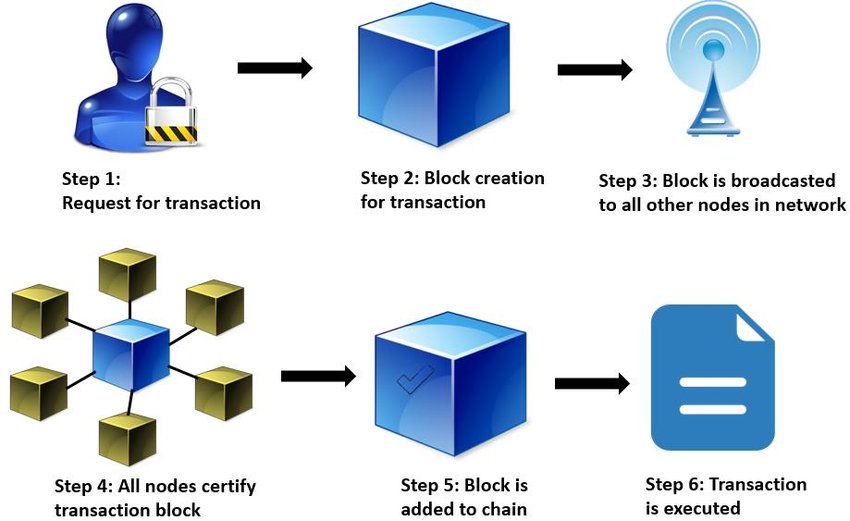Blockchain is a decentralized database that uses cryptography to ensure security. It allows users to make secure digital identity references, and is used for transactions in the cryptocurrency Bitcoin.
Today, businesses are using blockchain technology to improve transparency in food supply chains, vote securely in elections, and track products from the factory to the customer. It also has applications in financial services, like international money transfers.
It is a decentralized database
Blockchain technology is gaining popularity and traction in a variety of industries, from finance to healthcare and beyond. Its underlying system provides the foundation for new technologies that can revolutionize record-keeping, smart contracts, and supply chains. It is a distributed ledger that has a tamper-proof record of transactions. Each transaction is added to the blockchain in a block, which is then attached to the previous block through a consensus mechanism that involves a mixture of permissions and economic incentives.
Blockchain records transactions in a digital log that is distributed over millions of computers around the world. This allows it to be tamper-proof and incorruptible. Blockchain also uses cryptography to ensure privacy and security. Its structure is ideal for transactions because it eliminates the need for intermediaries like banks and other third parties.
The most famous use of blockchain is cryptocurrencies, which act as peer-to-peer electronic cash. They are not backed by any government or central bank, and the value is determined by market forces. Blockchain’s other applications include recording ownership and transferring land assets. It can also be used to track the origin of energy supplies, documenting energy certificates, and for metering and billing. This decentralized technology can even be used to verify and protect intellectual property, as it is highly secure.
It is secure
Unlike traditional financial transactions that require centralized verification, blockchain technology provides decentralized validation of each transaction. This allows a network to be much more efficient in processing information and is secure against hacking. It also offers several other desirable features, including immutability, transparency, and auditability.
Using a blockchain, transactions are approved by thousands of computers and devices, eliminating almost all human error. If a mistake does occur, it will be detected immediately and not propagated to the rest of the network. Additionally, a blockchain cannot be edited or deleted once it is sealed, allowing the network to maintain an accurate record of its activity.
Another security feature of the blockchain is its high levels of encryption and hashing. This makes it difficult for hackers to tamper with individual records on the network, and the encrypted data can only be changed by a majority of the network’s users. This is a key element of the technology’s security, and many companies are utilizing it to ensure that their customers’ information remains safe.
Blockchain is already revolutionizing industries like banking, finance, record-keeping, supply chains and even voting. For example, Indianapolis-based Anthem is using blockchain to give its health insurance customers access to their own data. This promotes oversight and could potentially save lives, while a blockchain-based system for tracking food from the farm to the dinner table is helping companies like Dole reduce food contamination.
It is efficient
Blockchain has become increasingly popular as a way to record transactions in cryptocurrencies like Bitcoin. However, it can also be used to immutably record many other types of data, including votes in an election, product inventories, state identifications, and deeds to homes. Currently, tens of thousands of projects are using blockchain technology to help society in different ways.
Blockchains use a distributed ledger that is shared across a network of computers to verify transactions without the need for central authority. This reduces the chance of human error and allows participants to see a complete history of a transaction. In addition, a blockchain is tamper-proof and cannot be modified after it is written, making it a good choice for highly sensitive transactions.
Companies that have adopted blockchains can save time and money by eliminating intermediaries and automating processes. In addition, they can increase efficiency by reducing paper waste and reducing the impact of supply chains on the environment.
For example, Walmart has been using blockchain to synchronize supply chain information and track shipments. It has also been using blockchain to make international money transfers more efficient. For instance, it has partnered with Ripple to make same-day international money transfers. Other partners include Barclays, Santander, and Lufthansa.
It is cost-effective
Blockchain technology provides a secure way to record transactions in a distributed ledger that is immutable and transparent. It can be used for many different purposes, including storing votes in an election, recording the origin of goods, documenting land assets, and even tracking deeds to homes.
This technology also saves time and reduces the cost of transactions by eliminating intermediaries and automating processes. It can also improve transparency in supply chains, encouraging sustainable practices and reducing waste and pollution. It can also help to prevent fraud and theft, as well as streamline business operations.
Using blockchain technology, financial markets can process transactions more quickly. For example, Santander recently launched the first blockchain-based international money transfer service. The new service is faster and more efficient than traditional methods and allows customers to make same-day or next-day international payments.
The underlying technology of most cryptocurrencies, blockchain is a secure, tamper-proof log that records transactions on a network that is shared by everyone. It can also connect specialized connected medical devices to a patient’s health records. In addition, it can make sure that changes to physician credentials are reflected immediately.
Many companies are leveraging blockchain to increase efficiencies and improve their bottom lines. For instance, IBM is implementing blockchain on its mainframes, and it has announced that it will continue to invest in this technology.

